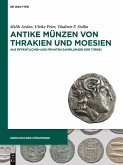The territory of modern Afghanistan provided a center - and sometimes the center - for a succession of empires, from the Achaemenid Persians in the 6th century BCE until the Sasanian Iranians in the 7th century CE. And yet these regions most frequently appear as comprising a "crossroads" in accounts of their premodern history. This volume explores how successive imperial regimes established enduring forms of domination spanning the highlands of the Hindu Kush, essentially ungovernable territories in the absence of the technologies of the modern state. The modern term "Afghanistan" likely has its origins in an ancient word for highland regions and peoples resistant to outside rule. The volume's contributors approach the challenge of explaining the success of imperial projects within a highland political ecology from a variety of disciplinary perspectives with their respective evidentiary corpora, notably history, anthropology, archaeology, numismatics, and philology. The Limits of Empire models the kind of interdisciplinary collaboration necessary to produce persuasive accounts of an ancient Afghanistan whose surviving material and literary evidence remains comparatively limited. It shows how Afghan-centered imperial projects co-opted local elites, communicated in the idioms of local cultures, and created administrative archipelagoes rather than continuous territories. Above all, the volume makes plain the interest and utility in placing Afghanistan at the center, rather than the periphery, of the history of ancient empires in West Asia.
Dieser Download kann aus rechtlichen Gründen nur mit Rechnungsadresse in A, B, BG, CY, CZ, D, DK, EW, E, FIN, F, GR, HR, H, IRL, I, LT, L, LR, M, NL, PL, P, R, S, SLO, SK ausgeliefert werden.









